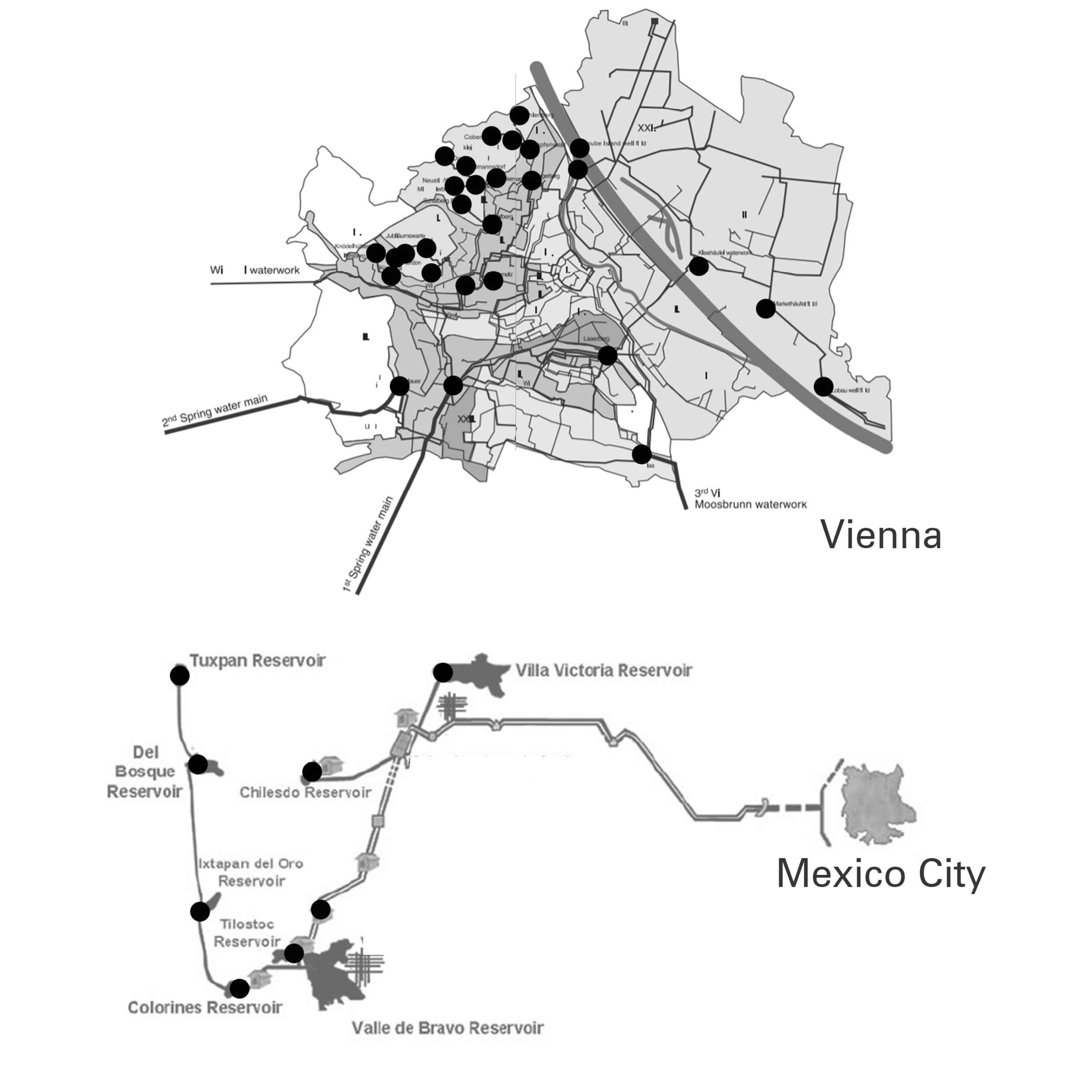
A reservoir is a natural or artificial water impoundment used to store water catering to varied functions like water supply, flood control, producing hydroelectricity, maintaining flow control, or for recreational purposes. Many reservoirs, such as the service reservoirs, provide raw water feed to a water treatment plant to provide drinking water. These service reservoirs are usually elevated and constructed as water towers in flat landscapes. At other times, they perform the function of cisterns by remaining underground in hilly or mountainous regions. These higher altitudes are vital in providing different pumping-pressures in varying zones. The typology of covered or underground reservoirs is functionally similar to the containers of water storage tanks. Such underground reservoirs perform a buffering function and act as an intermediary element between the water distribution system and the end consumer to satisfy residential, commercial, industrial and fire-fighting requirements.
Both Vienna and Mexico have a drinking-water supply system with twenty-eight reservoirs and seven reservoirs, respectively, at differing heights to ensure water supply in all parts of the city below through high-performance transport pipes. The Neusiedl am Steinfeld water reservoir in Vienna, and the water reservoirs of the Cutzamala System in Mexico, act as water storage tanks and, at times, as water treatment plants. Treatment procedures happen during its retention time and form an integral pause in the distributing system combined with various pipelines, aquifers, aqueducts, canals and pumping stations. The design of these reservoirs allows the particles and silts to settle out, in-turn purifying the water along with the presence of natural biological treatment using algae, bacteria and zooplankton. The Neusiedl am Steinfeld reservoir is the largest reservoir for Vienna's natural spring water supply, with four reservoir chambers 134.4 meters long and 120.4 meters wide, and with a filling height of ten meters. Two hundred and eighty-eight reinforced concrete columns support the ceiling of each container chamber. The Cutzamala system in ZMCM provides water from both the Cutzamala and the Lerma-Balsas river systems, where the network of seven reservoirs supply the water from a height of 1,300 meters. The water in these reservoirs is constantly monitored by control centres enabling the water distribution system to run at optimum efficiency.
← Back to Lexicon
Both Vienna and Mexico have a drinking-water supply system with twenty-eight reservoirs and seven reservoirs, respectively, at differing heights to ensure water supply in all parts of the city below through high-performance transport pipes. The Neusiedl am Steinfeld water reservoir in Vienna, and the water reservoirs of the Cutzamala System in Mexico, act as water storage tanks and, at times, as water treatment plants. Treatment procedures happen during its retention time and form an integral pause in the distributing system combined with various pipelines, aquifers, aqueducts, canals and pumping stations. The design of these reservoirs allows the particles and silts to settle out, in-turn purifying the water along with the presence of natural biological treatment using algae, bacteria and zooplankton. The Neusiedl am Steinfeld reservoir is the largest reservoir for Vienna's natural spring water supply, with four reservoir chambers 134.4 meters long and 120.4 meters wide, and with a filling height of ten meters. Two hundred and eighty-eight reinforced concrete columns support the ceiling of each container chamber. The Cutzamala system in ZMCM provides water from both the Cutzamala and the Lerma-Balsas river systems, where the network of seven reservoirs supply the water from a height of 1,300 meters. The water in these reservoirs is constantly monitored by control centres enabling the water distribution system to run at optimum efficiency.
← Back to Lexicon
Maps of the locations of reservoirs in Neusiedl am Steinfeld water system in Vienna and the Cutzamala water system in Mexico City.
Sources:
Sources:
- “Wasserbehälter Neusiedl am Steinfeld”, Wikipedia, accessed May 03, 2021, https://de.wikipedia.org/wiki/Wasserbeh% C3%A4lter_Neusiedl_am_Steinfeld
-
“Reservoir”, Wikipedia, accessed May 03, 2021, https://en.wikipedia.org/wiki/Reservoir#Controlling_watersources
- “Water for Urban Areas”, UNU, 2000, 243 p., http://www.nzdl.org/cgi-bin/library?e=d-00000-00---off-0fnl2.2--00-0----0-10-0---0---0direct-10---4-------0-1l--11-en-50---20-about---00-0-1-00-0--4----0-0-11-10-0utfZz-8-00&cl=CL1.5&d=HASH7ecfef951c65b8a6f0da56.8.5.2>=1
